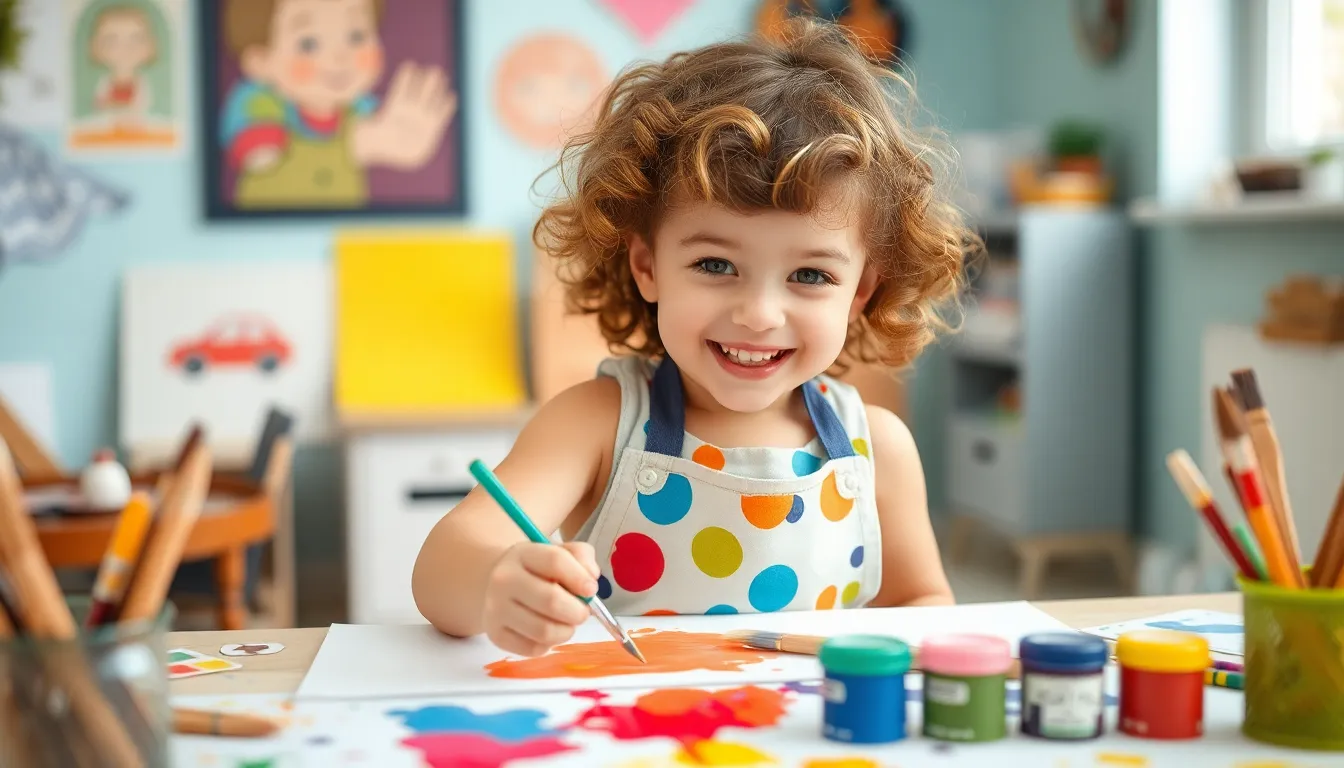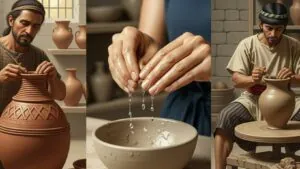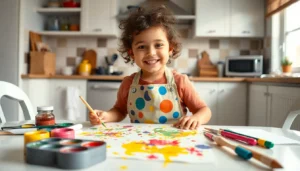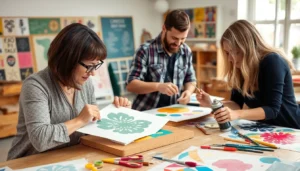Table of Contents
ToggleWhen it comes to keeping toddlers entertained, the struggle is real. Parents know that a few minutes of peace can feel like a mini-vacation, but finding engaging activities can be a challenge. Enter the world of DIY activities—where creativity meets chaos in the most delightful ways. These hands-on projects not only spark imagination but also give parents a chance to channel their inner Picasso without the need for an art degree.
Overview Of Toddler DIY Activities
Toddler DIY activities offer engaging ways for children to explore their creativity. Parents benefit from these interactions as they promote bonding through shared projects. Various materials, such as paper, paint, and natural items, serve as the foundation for countless activities, fostering hands-on learning.
Artistic expression emerges from simple tasks like finger painting or crafting with playdough. Simple tools like scissors or glue accompany these tasks, enhancing fine motor skills while keeping toddlers entertained. Activities such as making collages and painting rocks stimulate imagination and improve cognitive development.
In addition, DIY projects can often involve learning colors, shapes, and textures. Engaging toddlers in these projects encourages sensory exploration. Structured free play emerges from these activities, providing children the freedom to express themselves while adhering to loose guidelines.
Social skills often develop during group DIY sessions. Collaboration on tasks such as building a cardboard fort or planting seeds in a garden enhances communication. Moreover, projects encourage patience and turn-taking, essential skills for future social interactions.
Furthermore, using everyday household items for DIY projects keeps costs low and reduces waste. Recyclable materials, like cardboard boxes or bottle caps, transform into engaging art supplies. Toddler DIY activities not only entertain but also impart valuable life lessons about resourcefulness and creativity.
Benefits Of DIY Activities For Toddlers

DIY activities provide toddlers with numerous developmental advantages. Engaging in hands-on projects can lead to enhanced cognitive growth and a greater understanding of their environment.
Enhancing Creativity
Creativity flourishes through DIY activities. Toddlers express themselves as they explore colors, shapes, and materials. Imaginative projects, like crafting with recycled items, inspire unique artistic expressions. Providing an open-ended approach encourages children to think outside the box. These activities also foster problem-solving skills, as toddlers decide how to transform ordinary items into art. Ultimately, the freedom to create builds confidence and nurtures a love for exploration.
Building Fine Motor Skills
Skills such as hand-eye coordination and dexterity improve significantly through DIY projects. Activities like painting, gluing, and cutting strengthen small muscles in toddlers’ hands. Strategies like tearing paper or manipulating playdough enhance grip and coordination. Repetitive motions in these tasks reinforce muscle memory, making daily activities easier for children. These skill sets are crucial for future tasks, such as writing and self-feeding. Engaging in these fun projects supports a strong foundation for fine motor development.
Popular Toddler DIY Activities
Various DIY activities engage toddlers and encourage creativity. Parents appreciate the variety available, allowing for exploration and bonding.
Arts And Crafts
Arts and crafts offer endless possibilities for young creators. Activities like finger painting and collage making provide hands-on experiences. Utilizing materials such as paper, fabric scraps, and recyclable items encourages resourcefulness. Seasonal projects, like making holiday decorations, add excitement and relevance. Simple projects like creating greeting cards can spark joy for both toddlers and recipients. Parents discover that art fosters self-expression, while developing essential fine motor skills.
Sensory Play
Sensory play captivates toddlers by integrating textures, sounds, and colors. Activities such as making homemade playdough or sensory bins attract curiosity and exploration. Adding items like rice, beans, or water enhances the sensory experience. Toddlers learn about different properties through tactile interaction and imaginative play. Engaging in these activities also promotes language development as parents describe textures and sensations. Sensory play integrates learning with fun, deepening the parent-child bond.
Outdoor Projects
Outdoor projects allow toddlers to connect with nature while participating in creative tasks. Activities like planting seeds in a garden or crafting with leaves cultivate appreciation for the environment. Parents find joy in garden-based activities, teaching responsibility and patience. Creating nature collages with twigs, flowers, and stones provides artistic opportunities outside. Discovering textures and colors in nature encourages sensory exploration and environmental awareness. Outdoor activities promote physical activity and imaginative play while fostering creativity.
Tips For Successful DIY Activities
DIY activities require attention to detail to ensure a fun and safe experience for toddlers. Prioritizing safety and proper planning enhances engagement without risks.
Safety Considerations
Safety plays a crucial role in toddler DIY projects. Supervision is essential, especially when using scissors, glue, or paints. Using child-safe materials ensures that toddlers can explore creativity without harm. Check for age-appropriate supplies, like non-toxic paint or larger craft items that reduce choking hazards. Setting up a designated workspace helps contain messes and keeps children focused. Teaching toddlers about safe usage of materials promotes awareness and responsible creative expression. Health-conscious choices can also include wearing smocks to protect clothing and using washable supplies for easy cleanup.
Gathering Materials
Gathering materials can be a delightful part of the DIY experience. Parents can rely on everyday items, like recycled paper or empty containers, to encourage creativity. Finding natural materials, such as leaves or twigs, offers unique textures and colors for outdoor projects. Preparing a crafting kit in advance saves time and allows for spontaneous creativity when inspiration strikes. Organizing supplies in labeled containers fosters independence, enabling toddlers to choose their resources during projects. Including elements that spark curiosity, like various fabrics or beads, encourages exploration and experimentation. Combining different materials creates limitless possibilities for fun and imaginative activities.
Toddler DIY activities offer a fantastic way for parents to nurture their child’s creativity while creating lasting memories together. These hands-on projects not only entertain but also support essential developmental skills. By engaging in various activities, toddlers can explore their environment and express themselves freely.
Parents can easily incorporate DIY projects into their daily routines, using simple materials found around the house. This not only makes it cost-effective but also promotes resourcefulness and sustainability. With a little planning and creativity, parents can transform ordinary moments into extraordinary learning experiences. Embracing DIY activities is a wonderful way to foster a child’s imagination and strengthen the parent-child bond.







